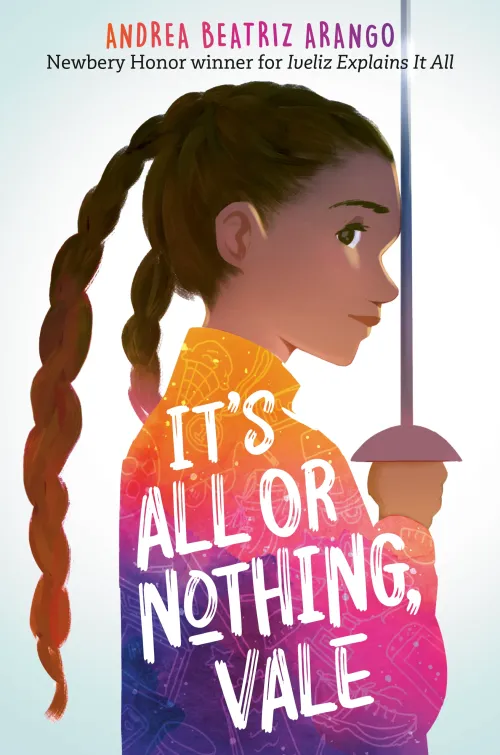Share this Book
To celebrate your students reading It’s All or Nothing, Vale (or as a way to encourage students to read it!), invite a fencing or parafencing instructor to your classroom to introduce the sport to your students. Bring Vale’s world to life in a hands-on, memorable way with a short demonstration of basic movements and an opportunity for students to learn more and ask questions about fencing.
After the visit, ask students to think about how fencing can be a metaphor for different parts of life—how it reflects the struggle to stay balanced, how we figure out our strengths, and how things don’t always go as planned, even when we make all the right moves.
Invite students to further explore fencing as a metaphor by writing a free‑verse poem about an emotional moment—either from the book or their own life—using fencing vocabulary and imagery to help show what that moment felt like. For example, they could describe an argument by drawing on fencing’s movement, strategy, attack, defense, and rhythm.
Have students share their poems and talk about the value of metaphor in building a shared understanding of experiences and emotions.
Questions for Discussion or Reflective Writing
- How does Vale define herself? Why does she care so much about being the best? What happens to Vale’s sense of identity because of her accident? How does her sense of identity shift over the course of the story? What helps her start to see herself in a new way?
- What pressures does Vale feel from her family? How do the attitudes of her parents affect her recovery and sense of self? In what ways do their intentions fall short? How does her brother try to offer his support?
- What are some of the ways Vale describes her pain? Why does she wonder if she counts as disabled? What is helpful to Vale as she figures out her feelings about labels?
- What ended Vale’s friendship with Stephanie? What makes her hesitant to begin a new friendship with Amanda? Have you ever felt nervous or unsure about starting a new friendship? What were you worried about, and how did you handle it?
- How does the arrival of Myrka complicate Vale’s emotions about returning to fencing? What tensions arise from their rivalry, and how do those tensions shift over time? What makes their relationship confusing or complicated for Vale?
Related Resources
It’s All or Nothing, Vale Educators’ Guide from Random House Teachers and Librarians
Fencing 101 from USA Fencing
More Titles to Try
Stay on top of current education news


